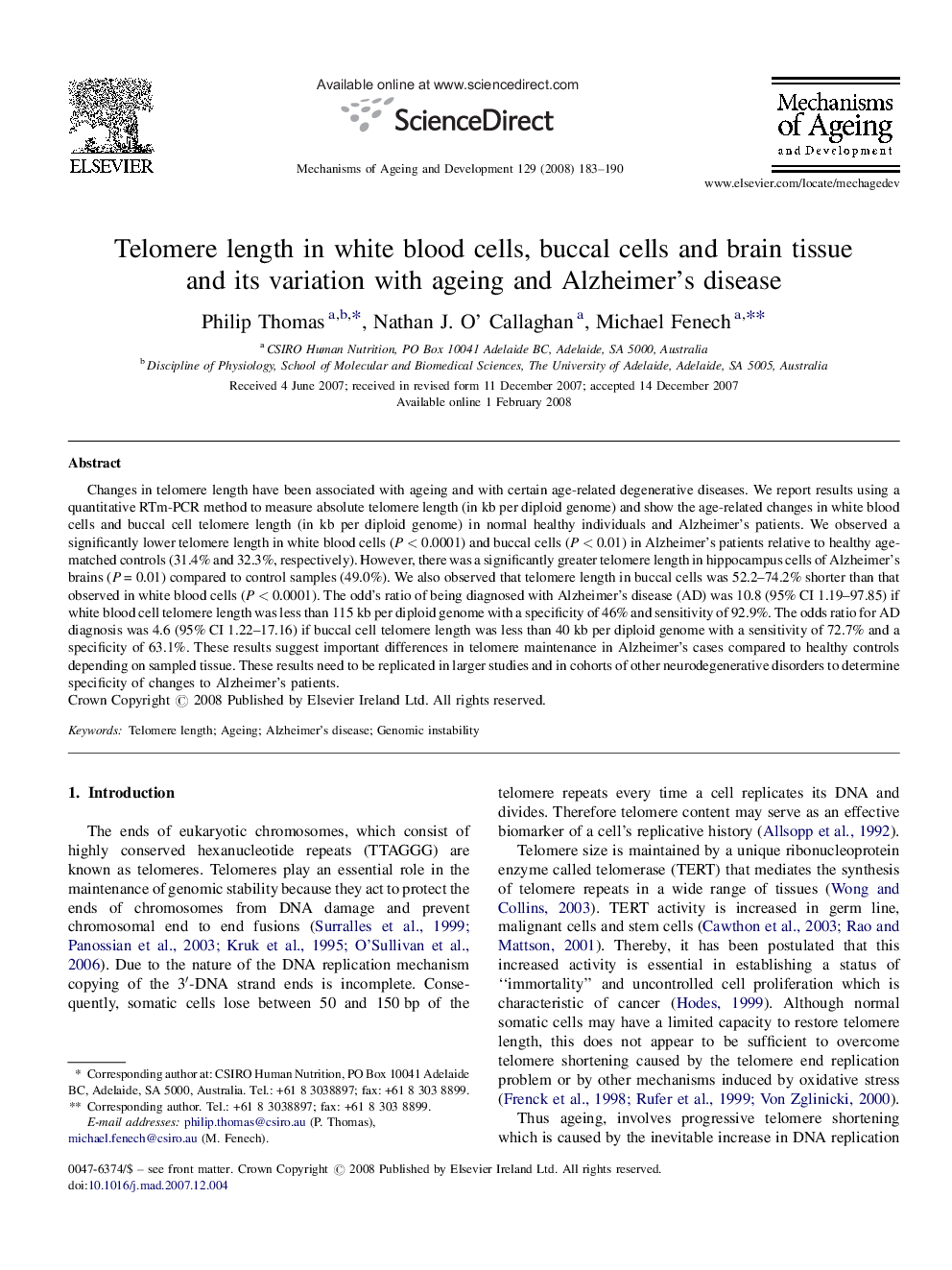| Article ID | Journal | Published Year | Pages | File Type |
|---|---|---|---|---|
| 1919523 | Mechanisms of Ageing and Development | 2008 | 8 Pages |
Changes in telomere length have been associated with ageing and with certain age-related degenerative diseases. We report results using a quantitative RTm-PCR method to measure absolute telomere length (in kb per diploid genome) and show the age-related changes in white blood cells and buccal cell telomere length (in kb per diploid genome) in normal healthy individuals and Alzheimer's patients. We observed a significantly lower telomere length in white blood cells (P < 0.0001) and buccal cells (P < 0.01) in Alzheimer's patients relative to healthy age-matched controls (31.4% and 32.3%, respectively). However, there was a significantly greater telomere length in hippocampus cells of Alzheimer's brains (P = 0.01) compared to control samples (49.0%). We also observed that telomere length in buccal cells was 52.2–74.2% shorter than that observed in white blood cells (P < 0.0001). The odd's ratio of being diagnosed with Alzheimer's disease (AD) was 10.8 (95% CI 1.19–97.85) if white blood cell telomere length was less than 115 kb per diploid genome with a specificity of 46% and sensitivity of 92.9%. The odds ratio for AD diagnosis was 4.6 (95% CI 1.22–17.16) if buccal cell telomere length was less than 40 kb per diploid genome with a sensitivity of 72.7% and a specificity of 63.1%. These results suggest important differences in telomere maintenance in Alzheimer's cases compared to healthy controls depending on sampled tissue. These results need to be replicated in larger studies and in cohorts of other neurodegenerative disorders to determine specificity of changes to Alzheimer's patients.
